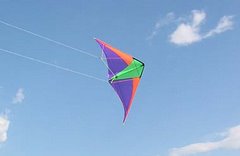In fact, kite flying has a fascinating history; man had the desire to fly since time immemorial. It was the spirit of man and his imagination that ultimately saw the invention of kites. Their fascinating history is depicted in the Kite Museum of Ahmedabad.
200 BC : Huein Tsang flew a kite at night to overawe the army of Liu Pang of Han dynasty in china.
100 BC to 500 AD : Kites were used by the army generals to send signals and to measure the distance of enemy camps.
930 AD : The earliest mention of "Shiroshi" in Japanese literature where 'Shi' means paper and 'Roshi' stands for the Chinese bird.
960 to 1126 AD : Flying kites became a popular activity of recreation in China. People celebrated the 9th day of the ninth month, a day signifying the banishment of evil, by flying kites.
1542 AD : For the first time the word ' Patang' finds mention in Indian literature. It was used by Manzan in 'Madhumalti', where the flight of a kite is associated with the loved one by a poet.
1752 AD : Benjamin Franklin lofted a kite to prove that lightning was of the same electric matter as the one that generated electricity.
Wooden sticks were affixed to four corners of a square silk handkerchief and a projecting metal wire with sharp edge was attached to it. When an electrified cloud passed over the kite, lightning was drawn down through the pointed wire.
1870 AD : Australian inventor Lawrence Hargrave designed box-kites whose stability inspired others to create power driven aeroplanes.
1896 AD : Alexander Graham Bell designed ' tetra' by combining lightweight sticks. He flew 'Frost King" kite of 256 cells and improvised it to have 1300, and later 3393 cells.
At this time, Samuel Cody carried out experiments with man carrying diplane gliders.
1902 AD : Cody's contemporary, the Wright brothers, were successful in becoming airborne, age of aviation begins.
Reference: http://www.aryabhatt.com/fast_fair_festival/Festivals/International%20Kite%20Festival.htm
Monday, March 26, 2007
Subscribe to:
Comments (Atom)
